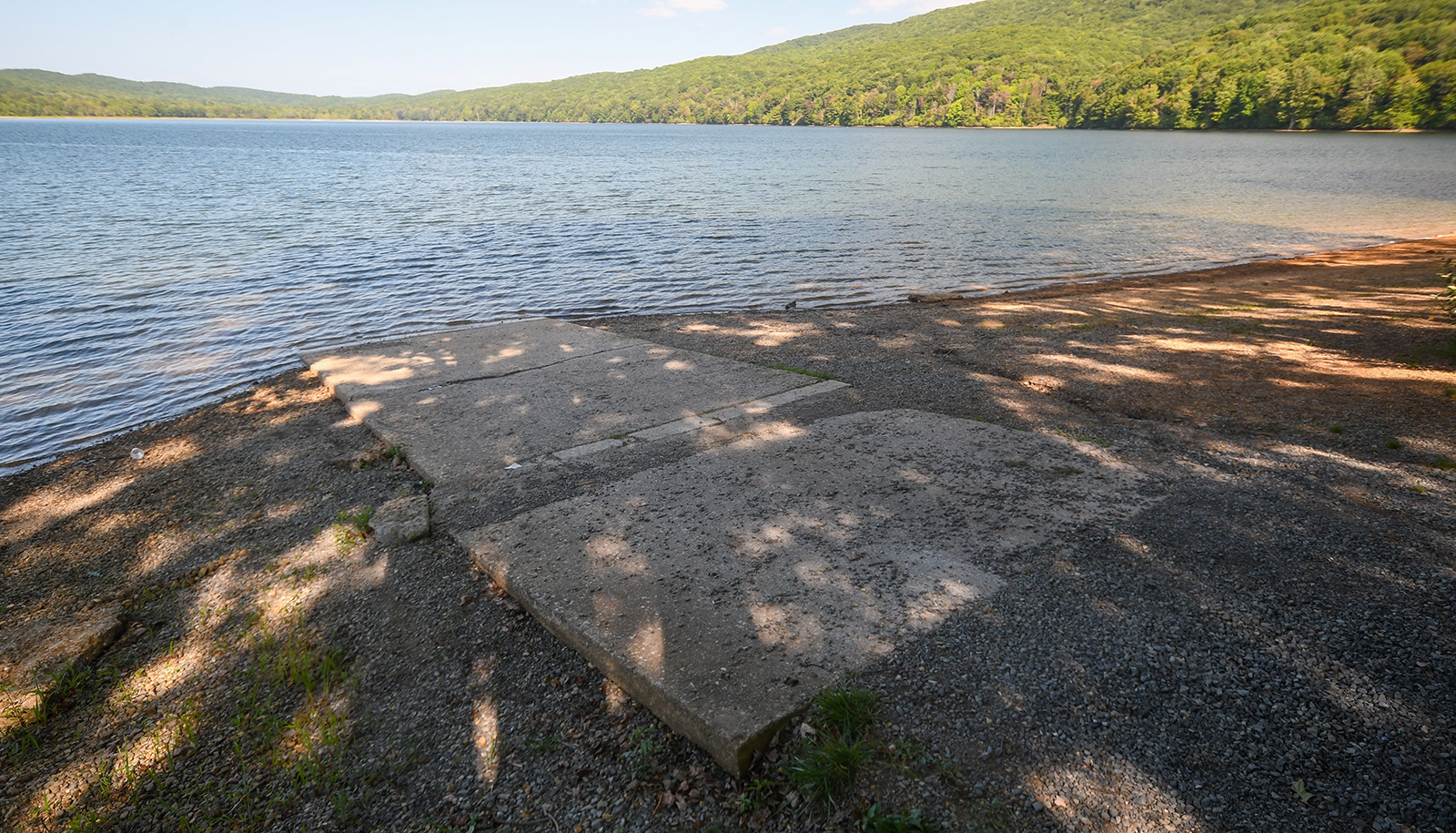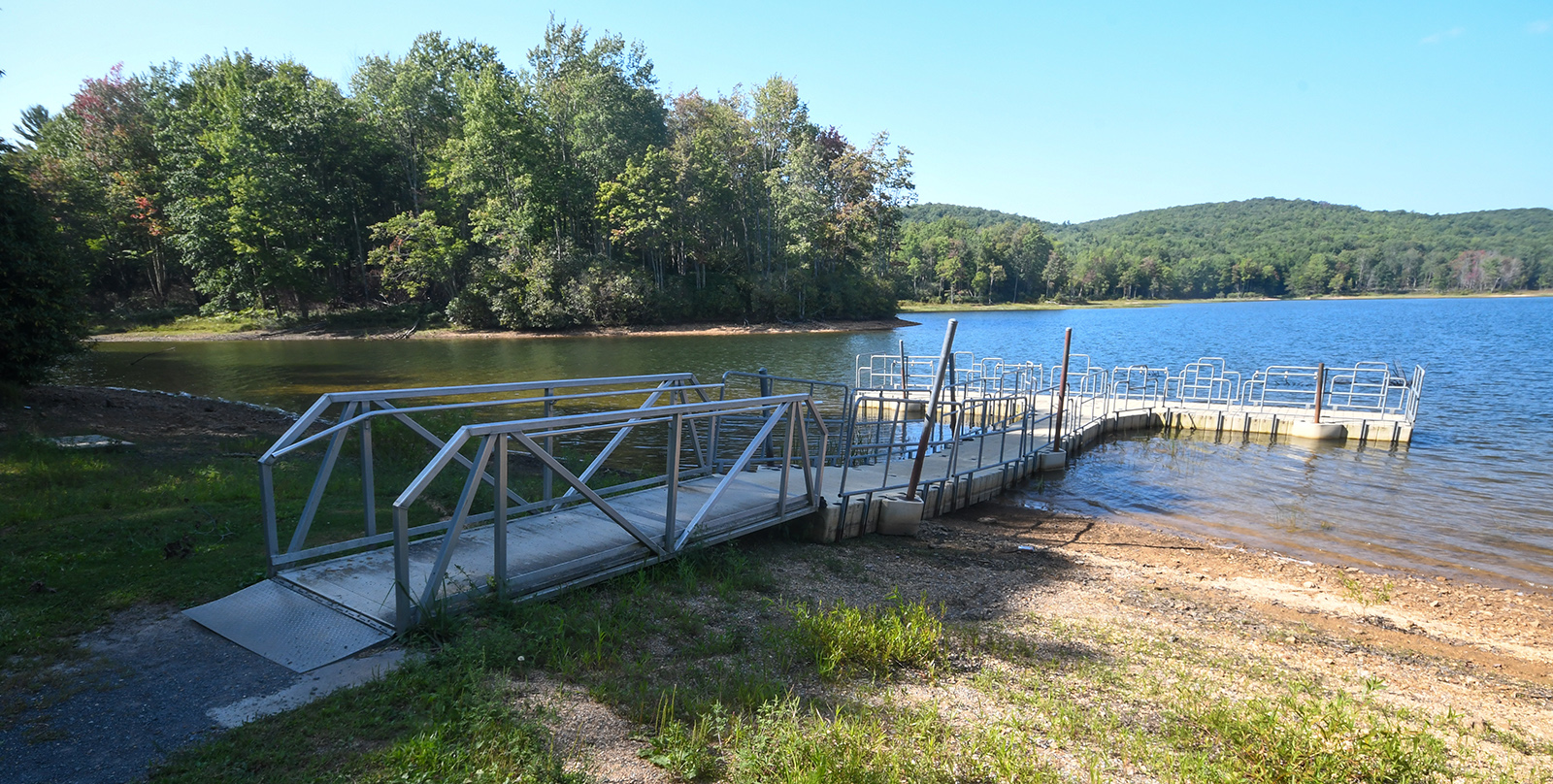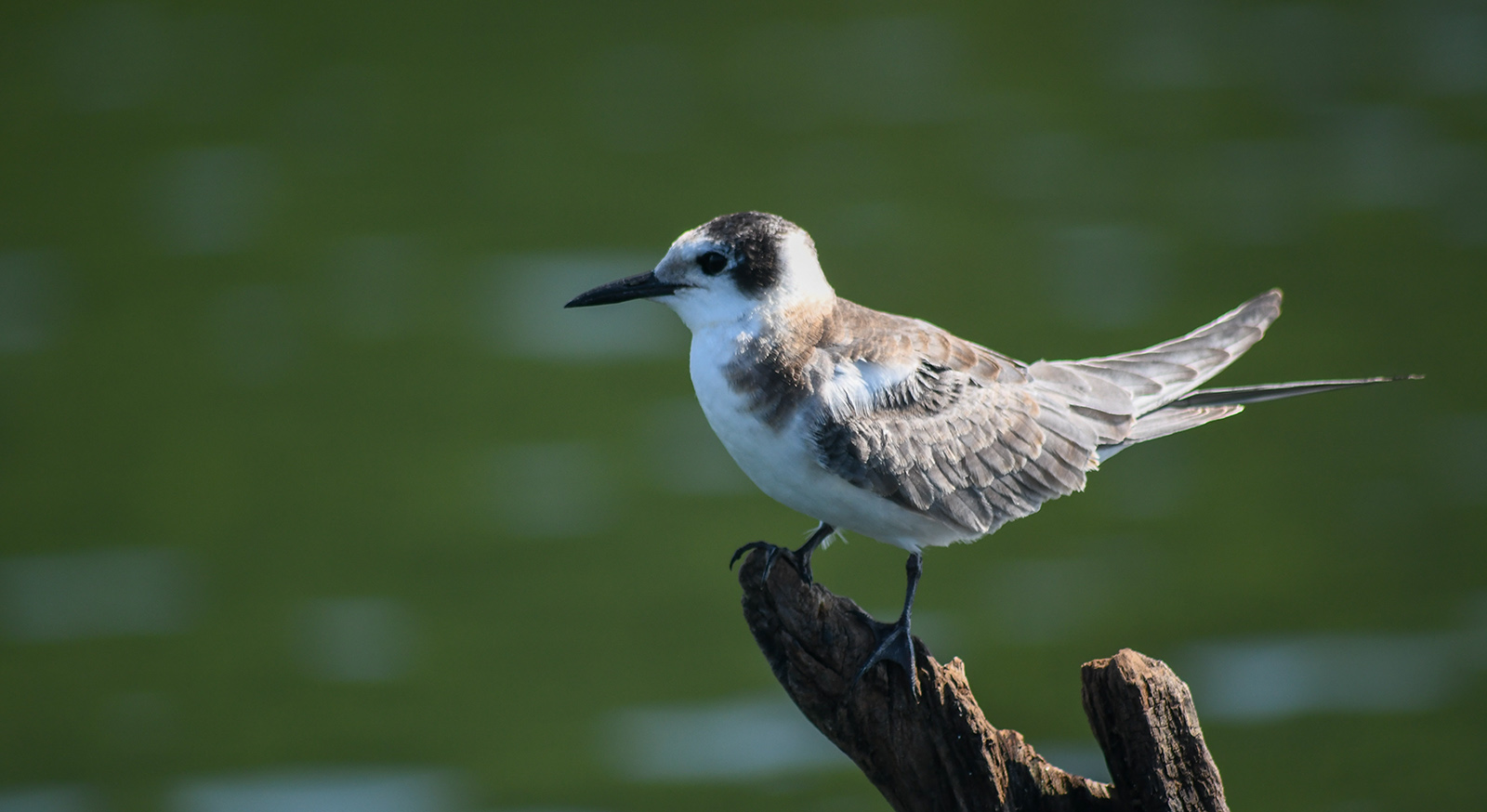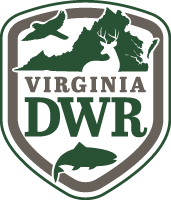By Matt Reilly
Photos by Matt Reilly
Perched atop the crown of a great Southern Appalachian mountain ridge and hidden amongst a dense rhododendron thicket, one of southwest Virginia’s most unique fishing and boating resources awaits dedicated adventurers.
Laurel Bed Lake, the 330-acre reservoir that serves as the focal point of the 25,477-acre Clinch Mountain Wildlife Management Area (WMA), is the largest Department of Wildlife Resources (DWR)-owned reservoir west of the Blue Ridge, and—at 3,600 feet in elevation—one of the highest elevation lakes in the state of Virginia. Its picturesque setting, rich angling opportunities, and unique ecological communities make this gem an asset to outdoor enthusiasts of all persuasions.
There are two boat ramps on Laurel Bed Lake—one near the dam and one about halfway up the northwest side of the lake. Both are suitable for everything from kayaks to bass boats. Reach them by taking Poor Valley Road (Rt. 613) out of Saltville before turning on to Tumbling Creek Road (Rt. 747), which traverses the WMA, and eventually bearing left onto Laurel Bed Lake Road, crossing Big Tumbling Creek. The boat ramp area near the dam features an accessible fishing pier.


Both boat ramp parking lots can accommodate boats with trailers. However, travelers should be warned—the road to the lake, though beautiful and well-maintained, is a nearly seven-mile, relatively narrow, windy, gravel road that leads up Big Tumbling Creek and some of the most rugged terrain in this corner of the state. During especially brutal winter weather, the road may be gated due to hazardous conditions, so call the DWR Marion Regional Office at 276-783-4860, or the Clinch Mountain WMA Office at 276-944-3434 before making a trip to the lake in the winter. During the warmer months, the road can be quite busy, particularly during Big Tumbling Creek’s fee fishing season. Those towing large trailers should consider familiarizing themselves with the route before making the trip.
Regulations permit gas motors up to 9.9 horsepower on Laurel Bed and have changed in recent years from electric-only. While the lake is very suitable for paddlecraft and is very fishable with just a trolling motor, the lake can be quite windy and turns rough—even dangerously so—fairly easily. So, make sure you check the weather forecast before making a trip, and make sure to bring sufficient gas and battery power.
Laurel Bed Lake was impounded to create a stillwater fishery within the Clinch Mountain WMA, but also to provide streamflow supplementation to Big Tumbling Creek. As such, the lake level fluctuates dramatically between the spring and late summer.
The lake’s fishery has also fluctuated over the decades. In the 1970s and ‘80s, Laurel Bed was a destination brook trout fishery in southwest Virginia, but that fishery’s success was challenged towards the turn of the century. In the early 1980s, rock bass were illegally stocked in the lake, creating competition for the brook trout. Additionally, in the early 1990s, acidic precipitation in the vicinity of the lake caused a reduction in the pH of the lake’s water, which harmed the health of the trout and reduced the insect life that they depended upon for growth. Rock bass can survive and reproduce in acidic water, which allowed them to overpopulate and place even greater pressure on the already-crippled brook trout population.
In 1996, Laurel Bed was drained to allow for structural repairs to the dam, and biologists seized the opportunity to remove the rock bass and reestablish the once-thriving brook trout population. However, after the lake’s refilling, rock bass were still collected during routine sampling efforts in 1998.
In another effort to control the rock bass, biologists introduced smallmouth bass to the lake, hoping that they would predate the rock bass and keep their population from exploding. Until recently, smallmouth were managed under catch-and-release regulation.
Today the lake offers anglers the opportunity to fish for brook and rainbow trout, smallmouth bass, and bluegill. In 2022, in response to declining growth rates in the lake’s smallmouth bass due to a shortage of forage, a protected slot limit was instituted, allowing anglers to harvest fish smaller than 14 inches and larger than 19 inches. Around the same time, alewives and fingerling bluegill were also stocked for additional forage. The lake is treated with limestone dust every other fall to keep the pH of the lake above 6.0, where it can support fish and insect forage.

A nice smallie caught at Laurel Bed Lake.
Wildlife enthusiasts will find Laurel Bed Lake and the surrounding habitats to be an interesting micro-climate filled with interesting resident and migratory species. The lake and Clinch Mountain WMA are part of the Virginia Bird and Wildlife Trail. The lake and upper watershed are home to significant beaver activity, featuring several active beaver ponds that also create habitat for migratory waterfowl, like wood ducks and pied-billed grebes—both regular sights during their spring breeding seasons. Mink are commonly spotted slinking down the rocky, southern shoreline of the lake, and black bears are prolific in the high-elevation, mountain habitat that surrounds the lake.
Birders will find the standard assemblage of riparian bird species present around the lake, such as stealthy herons stalking the shallows near the upper boat ramp and chattering kingfishers swooping from tree to tree. Bald eagles are regular sights for most of the year. In the spring, species like black-throated green, chestnut-sided, cerulean, and magnolia warblers, which are more commonly found nesting in more northern climes, can be seen breeding in the high elevations near the lake. As the water level drops in the late-spring, solitary and spotted sandpipers can be seen bobbing along the exposed rocky shoreline. As a high-elevation lake, Laurel Bed can see a number of interesting drop-ins, such as the common loon and black tern, so keep your eyes open!

Laurel Bed Lake’s micro-climate leads to some unusual wildlife sightings, such as this juvenile black tern, a species most commonly spotted near the coast.
Tucked away in the rhododendron-choked folds of the rugged Mountain Empire, Laurel Bed Lake is one of the Department’s most unique resources. Whether you enjoy paddling in a picturesque mountain setting; fishing for smallmouth bass, trout, or panfish; or watching wildlife in unique microclimates, it’s worth the trip!


